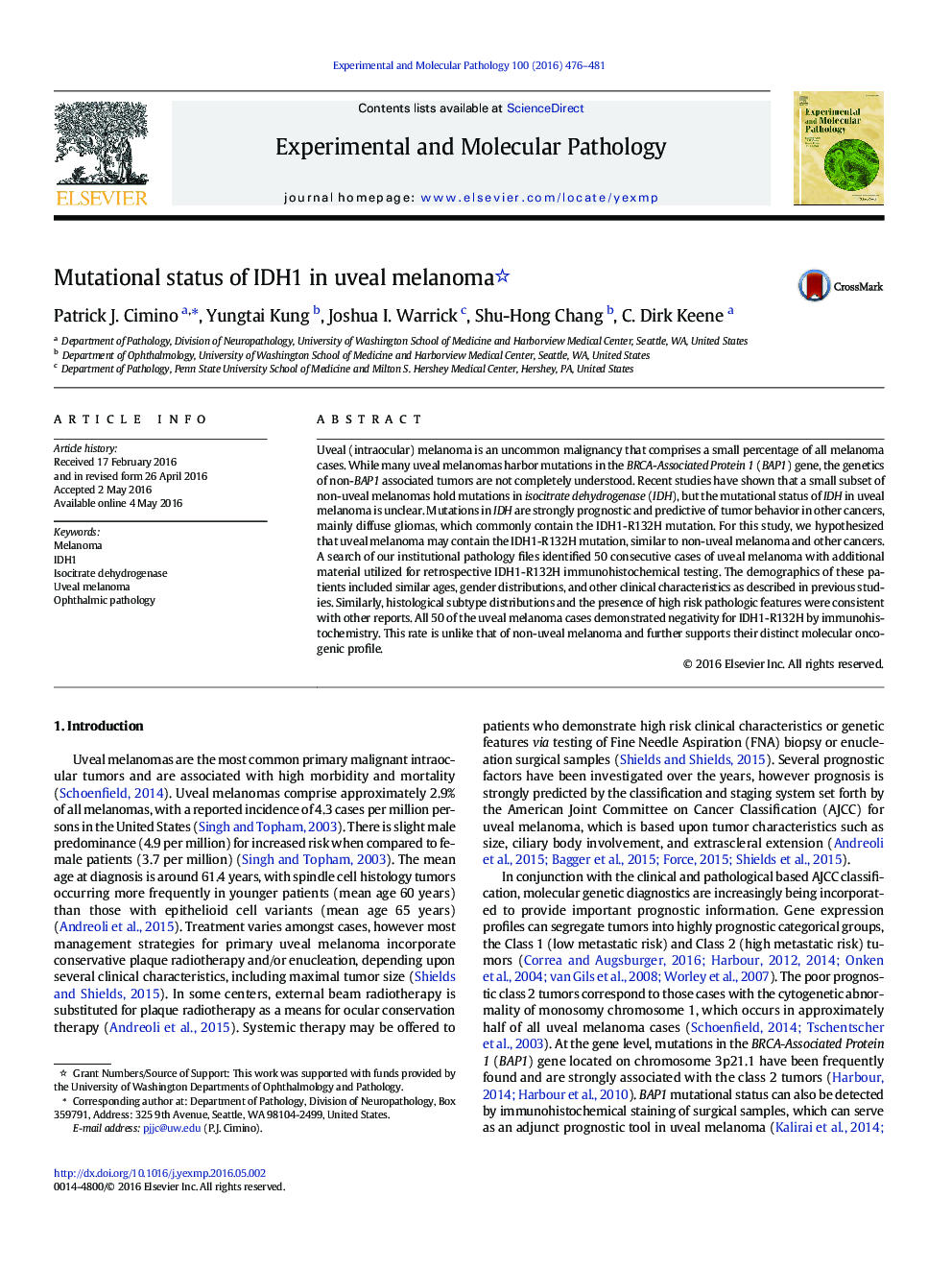| Article ID | Journal | Published Year | Pages | File Type |
|---|---|---|---|---|
| 2774863 | Experimental and Molecular Pathology | 2016 | 6 Pages |
•IDH mutations have been recently described in cutaneous melanoma.•Mutational status of IDH in uveal melanoma is unknown.•Fifty consecutive cases were tested for IDH1-R132H by immunohistochemistry.•Fifty six additional cases were identified in COSMIC.•No IDH mutants are observed in any uveal melanoma.
Uveal (intraocular) melanoma is an uncommon malignancy that comprises a small percentage of all melanoma cases. While many uveal melanomas harbor mutations in the BRCA-Associated Protein 1 (BAP1) gene, the genetics of non-BAP1 associated tumors are not completely understood. Recent studies have shown that a small subset of non-uveal melanomas hold mutations in isocitrate dehydrogenase (IDH), but the mutational status of IDH in uveal melanoma is unclear. Mutations in IDH are strongly prognostic and predictive of tumor behavior in other cancers, mainly diffuse gliomas, which commonly contain the IDH1-R132H mutation. For this study, we hypothesized that uveal melanoma may contain the IDH1-R132H mutation, similar to non-uveal melanoma and other cancers. A search of our institutional pathology files identified 50 consecutive cases of uveal melanoma with additional material utilized for retrospective IDH1-R132H immunohistochemical testing. The demographics of these patients included similar ages, gender distributions, and other clinical characteristics as described in previous studies. Similarly, histological subtype distributions and the presence of high risk pathologic features were consistent with other reports. All 50 of the uveal melanoma cases demonstrated negativity for IDH1-R132H by immunohistochemistry. This rate is unlike that of non-uveal melanoma and further supports their distinct molecular oncogenic profile.
